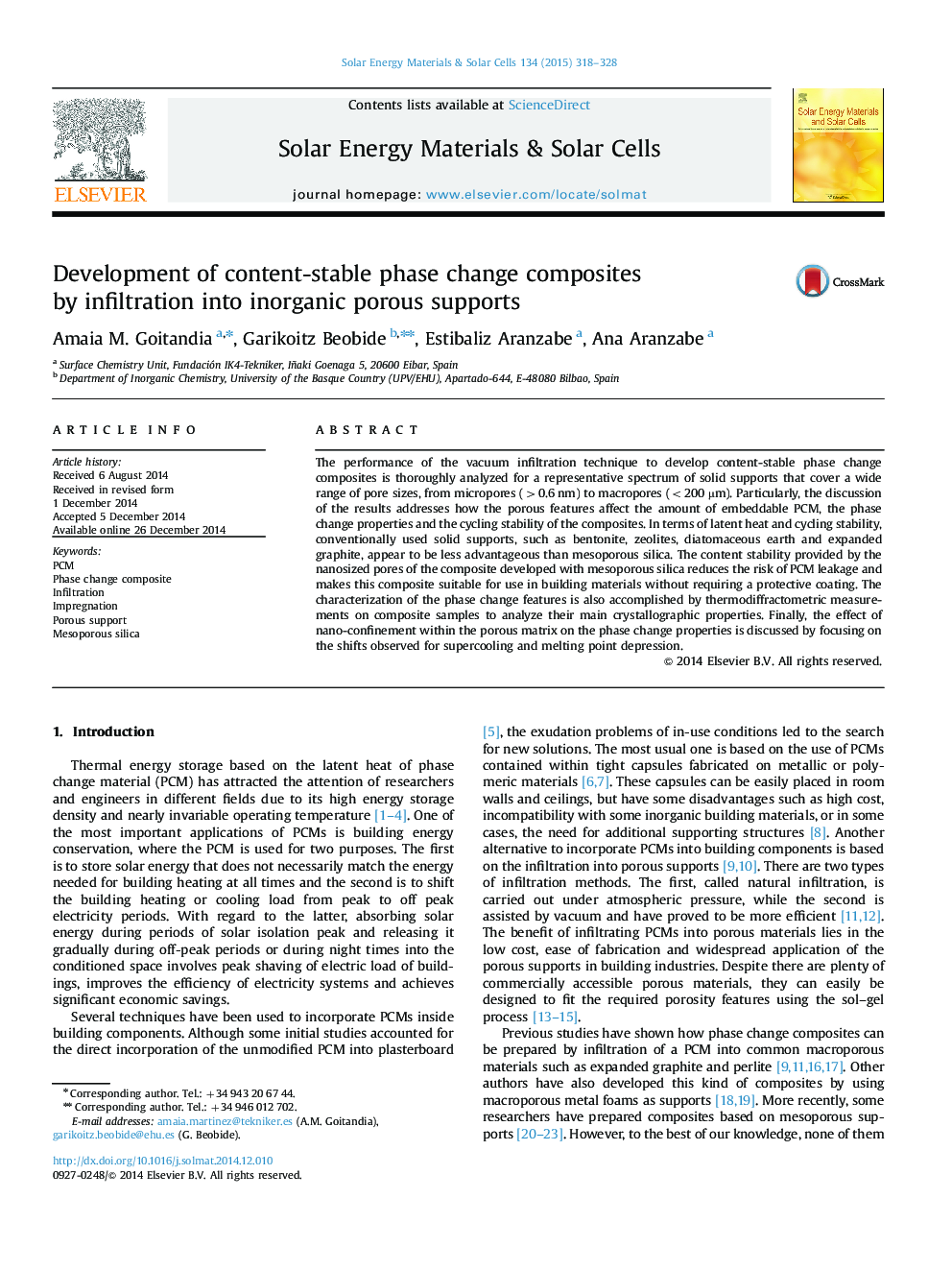| Article ID | Journal | Published Year | Pages | File Type |
|---|---|---|---|---|
| 77923 | Solar Energy Materials and Solar Cells | 2015 | 11 Pages |
•Macroporous supports leak the PCM during thermal cycling.•Mesoporous supports retain the PCM and avoid its leaking.•Content-stable composites present PCM contents around 40–45%.•Nano-confinement influences the supercooling degree and the melting point depression.
The performance of the vacuum infiltration technique to develop content-stable phase change composites is thoroughly analyzed for a representative spectrum of solid supports that cover a wide range of pore sizes, from micropores (>0.6 nm) to macropores (<200 µm). Particularly, the discussion of the results addresses how the porous features affect the amount of embeddable PCM, the phase change properties and the cycling stability of the composites. In terms of latent heat and cycling stability, conventionally used solid supports, such as bentonite, zeolites, diatomaceous earth and expanded graphite, appear to be less advantageous than mesoporous silica. The content stability provided by the nanosized pores of the composite developed with mesoporous silica reduces the risk of PCM leakage and makes this composite suitable for use in building materials without requiring a protective coating. The characterization of the phase change features is also accomplished by thermodiffractometric measurements on composite samples to analyze their main crystallographic properties. Finally, the effect of nano-confinement within the porous matrix on the phase change properties is discussed by focusing on the shifts observed for supercooling and melting point depression.
Graphical abstractFigure optionsDownload full-size imageDownload as PowerPoint slide
